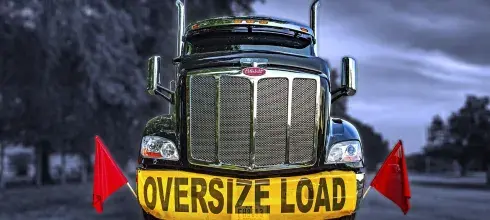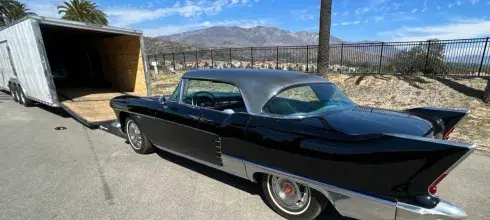So you’ve decided to ship a car across country. You’ve found a suitable auto transport company to work with and now it’s time to make sure you’re prepared. There are several things you can do if you want the process to be as smooth as possible.
Your car is a valuable asset. It might be the most expensive possession you’ve ever bought so it’s understandable that you might be feeling a little stressed about the process. If you’ve chosen SGT Auto Transport as your cross country car shipping company, you’re already off to a great start. We’ll do everything we can to make the process as smooth and hassle-free as possible.
To help us provide the best service, we’ve got a stellar customer support team who will guide you through the whole process. We also do almost everything for you and transport your car across country safely and securely. However, there’s one thing we can’t do and that's prepare your car for shipping across the country. We appreciate you might not know what to do for the best, especially if this is your first time, so we’ve prepared a list for you.
Top 12 tips on getting your car ready
Shipping a vehicle across country isn’t a complicated process, but it’s a little more involved than simply waiting for the carrier to collect your car and then handing over the keys. If you want to ensure a smooth and stress-free process and have peace of mind, the following tips will help.
Wash your vehicle, inside and outside
The first thing anyone needs to do when they ship cars across country is to wash the exterior of the vehicle. When the carrier arrives to collect your vehicle, they will conduct a visual inspection of the vehicle with you. Any existing damage will be recorded on the Bill of Lading or the condition report.
If your vehicle is clean, it will be much easier to spot any damage. You’ll be able to see any existing dings, scratches, paint chips, dents, or other damage clearly.
You can save a lot of time by making a note of any damage before the carrier arrives. It’ll also ensure you don’t miss anything because you’re feeling rushed by the driver.
Take pictures of your vehicle
Once you’ve cleaned your car and it’s looking nice and shiny, spend some time taking pictures. Make sure the photos are clear, good quality, and dated. Don’t just take pictures of the damaged areas. Include general photos of the car from various angles. There’s no such thing as too many photos. They will be for your own records and protect you in the rare event of damage occurring during the cross country car shipping process.
In some cases, carriers also take photos as part of the vehicle condition report, but this isn’t something you should rely on. Assume that photos won’t be taken and make sure you’ve got your own set.
One photo that will be for your peace of mind should be one of the odometer. You might be feeling a little nervous about handing the keys of one of your most valuable possessions over to someone you’ve never met before and that’s perfectly understandable.
Clean the interior of your car
When you get your car moved across country it will most likely be on a large car trailer. Your car may bounce up and down a bit while it’s on the road which could cause any loose items inside your car to move around.
To prevent things from getting damaged, remove any items not secured such as phone holders, GPS devices, car chargers, portable DVD players, and even air fresheners. Small items such as pens and spare change should also be removed. Removing such items also helps to decrease the risk of theft or loss of these items during the transport process.
Remove or secure any accessories
If your car has accessories such as luggage or bike racks, ski racks, or custom spoilers you might want to consider removing these as well. If the antenna can be removed, it’s a good idea to remove it and put it in the trunk of your vehicle. Also, fold in your side view mirror if this is possible.
Check the tires, battery, and radiator
For standard cars, you should make sure that the battery is fully charged and secure. If you're shipping an EV, the cells or battery packs should be at a 45% - 65% state of charge for safety reasons. Check that there’s antifreeze in the radiator. In addition, check the tires are properly inflated. There is a risk of damaging the tires or wheels during car shipping if the tires are over- or under-inflated.
Check for fluid leaks
Check that there are no fluid leaks. If you find any leaks, it’s a good idea to get them fixed before the driver picks up your vehicle. If your vehicle has a serious fluid leak, the carrier may refuse to accept your vehicle. If it’s only a minor leak but it’s not easily fixed or you don’t have the time to fix it, you should let the driver know.
If the driver knows of the leak he might be able to place your vehicle on the bottom row of the trailer. If your car is put on the top of the auto transport trailer, there’s a risk it will drip on the cars below.
Check for any mechanical and engine problems
Are you certain that your car is in good working order? If you’re not certain, have a mechanic check it for engine and other mechanical problems. If you’ve got the time, have them tune it up before the carrier picks up your car.
If your car is not running, you need to let the carrier know as soon as possible because they'll need the correct equipment to load your vehicle onto the trailer. There are additional charges to ship an inoperable car cross country so it’s best to make sure your vehicle is operable.
Empty the gas tank to 1/8 to 1/4 full
You only need to leave enough gas in the fuel tank for it to drive on and off the trailer. The lighter your car is for interstate car transport the better as it saves weight for the transporter.
An important note is that while it’s best to have a 1/4 tank of gas or less, you don’t need to worry about draining it if it’s more than that.
Disable any alarms
The driver of the auto transport trailer is not going to be very happy if he can hear an alarm going off. He’ won't be able to get to the alarm easily and might not know how to shut it off once he gets to the vehicle. Save the driver the hassle of looking for the alarm by disabling it.
Deactivate or remove toll tags
The toll tag in your car isn’t going to recognize whether your car is being driven or on a trailer. It is still likely to pick up any fee so to save you any unnecessary headaches and expenses, deactivate or remove your toll tags.
Have the keys ready
The carrier’s driver will struggle to get your car on and off the trailer if they haven’t got your car keys. If your vehicle is an older model you might need to provide a door lock key in addition to the ignition key and maybe even a glove compartment key.
A good idea would be to have a whole set of keys for you and the driver. If you haven’t got a spare set of keys try and get this sorted before the vehicle is collected for transport.
Check your car insurance
If your car is already insured, check with your insurance provider that the car is covered during transport.
Your vehicle will be covered by the carrier’s cargo insurance if there is any damage caused by the transporter. However, any damage caused by natural causes or “Acts of God” such as flooding, hail tornadoes, or lightning, and your insurance will cover the repairs.
If you follow these simple tips on how to prepare your car for shipping across the country, you’ll have a lot less stress and peace of mind.
If you haven’t booked your auto transport yet, get in touch with us here at SGT Auto Transport. Use our Live Chat or speak directly with our shipping advisors at (864) 546-5038.
If you need to ship your vehicle across country, get an instant quote here.







